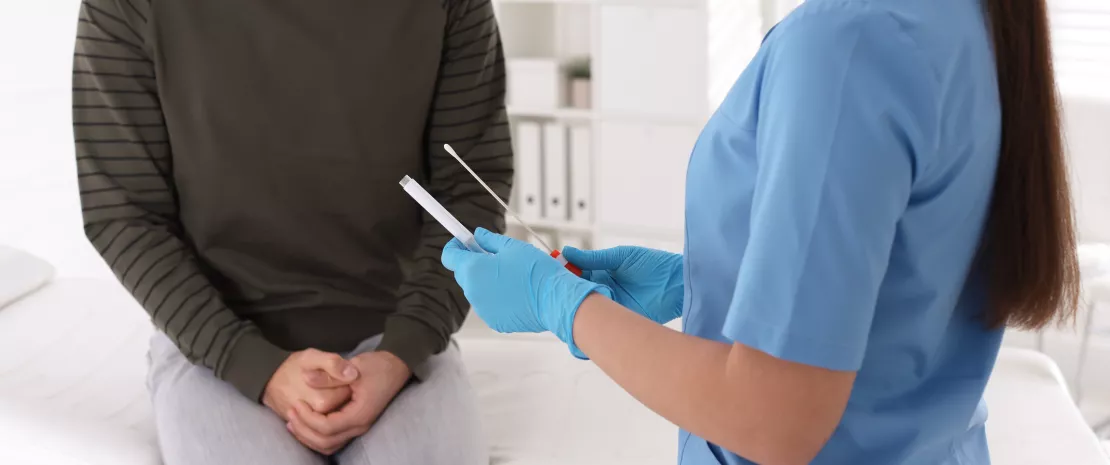Everything you always wanted to know about penile microbiota (but were afraid to ask)
The microbiota of the male urethra has been little studied and yet it has the potential to disrupt the vaginal bacterial ecosystem. How? Read on to find out more.
- Learn all about microbiota
- Microbiota and related conditions
- Act on your microbiota
- Publications
- About the Institute
Healthcare professionals section
Find here your dedicated section
Sources
This article is based on scientific information

About this article
The male urethra, i.e., the canal that runs through the penis and carries urine and sperm, is, like many other parts of the body, home to a whole microscopic world. This microbiota is generally only talked about when it is invaded by pathogenic bacteria that cause painful inflammation, such as the “clap” caused by gonococcal infection. Poorly understood and little studied (understandably, few men volunteer to be swabbed...), the microbiota of the male urethra has just revealed some of its secrets, thanks to the courage of 110 healthy Americans who agreed to have a swab taken.
Definition
The urethra, i.e., the small canal that connects the bladder to the tip of the penis, measures around 15 cm in men, compared with 3.5 cm in women.
Female pathogens found in some men
The samples show that most of these men harbor a relatively simple community of (sidenote: Microorganisms Living organisms that are too small to be seen with the naked eye. They include bacteria, viruses, fungi, archaea and protozoa, and are commonly referred to as “microbes”. What is microbiology? Microbiology Society. ) , including oxygen-loving bacteria which probably live at the tip of the penis close to the open air. Their relatively constant presence suggests that they form a sort of core community, ensuring the health of the penile urethra.
However, some men have a more complex set of microorganisms, including bacteria known to disrupt women’s vaginal bacterial ecosystem and cause all sorts of disorders (vaginosis, etc.).
These bacteria could live a little deeper in the urethra of the penis, far from any source of oxygen. More importantly, only men who reported having had vaginal sex are carriers of these pathogenic bacteria. It's only a short step from there to imagining that they brought them back from a “close encounter” with a vagina...
Is a man's urethra a reservoir of harmful bacteria for women?
Based on the findings of the researchers who examined the reported sexual practices of the 110 participants, sexual behavior (i.e., vaginal, oral or anal intercourse and combinations thereof) over the last two months explained around 10% of the total variation in the composition of the penile urethra microbiota, of which 4.26% can be explained by vaginal intercourse alone. Men in good health appear to be able to be colonized for extended periods by bacteria that they could pass on to their subsequent female partners, with these women running the risk of getting bacterial vaginosis. This is a public health issue that the team is continuing to investigate, with plans to study couples to find out more about potential transmissions.








